The global economy has kicked off well this year. Europe, the US and Japan are showing more solid signs of recovery, while the Mainland may expect to maintain medium-fast economic growth. The “Belt and Road” initiative, development of city clusters in the Guangdong-Hong Kong-Macao Bay Area, as well as emerging Asian economies packed with potentials are offering boundless room for development for Hong Kong. At the start of this new year, the CGCC Forum has invited government officials, as well as renowned experts and entrepreneurs from Hong Kong, the Mainland and Macau to share their in-depth analyzes and discuss the opportunities of Hong Kong under these new circumstances.
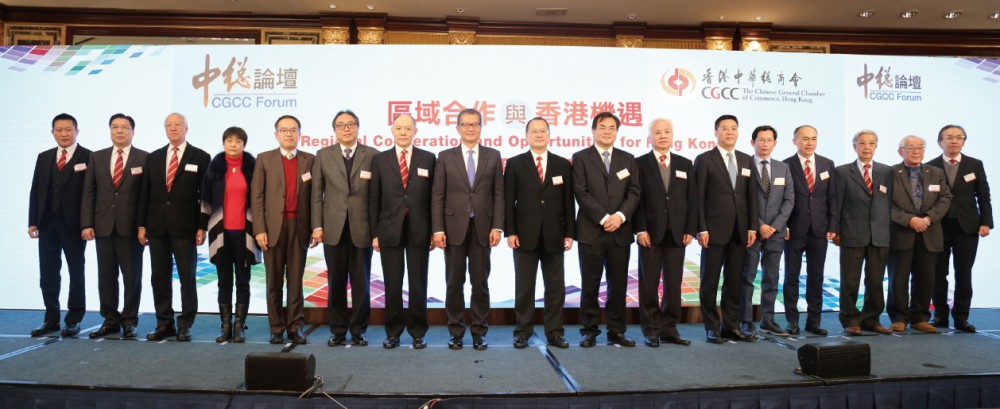
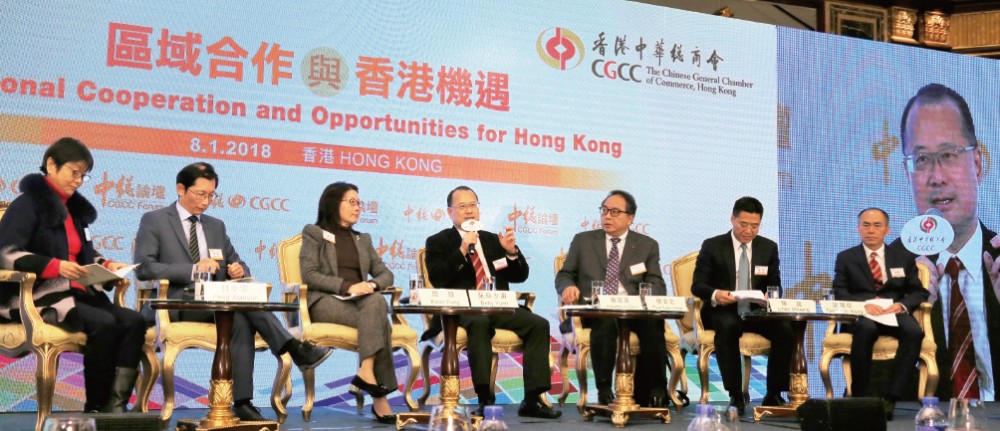

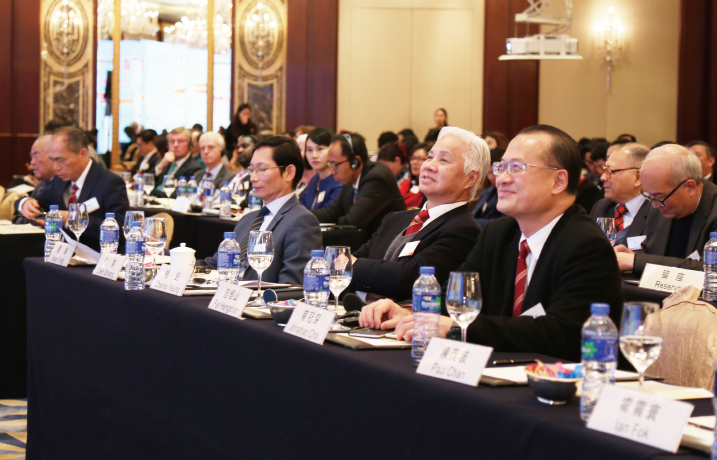
Paul Chan: Seize Opportunities Conscientiously
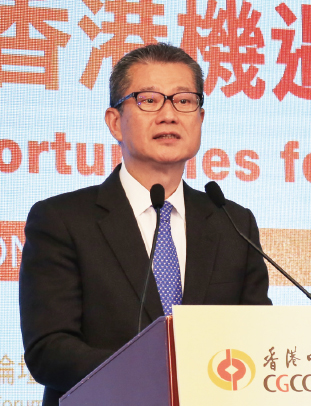
The global economy has undergone a lengthy recovery since the financial tsunami in 2008. Significant improvements are finally seen in 2017. According to Paul Chan, Financial Secretary of the HKSAR, the US economy has continued to expand, and more and more people are employed. Added with mild inflation and the stimuli brought about by tax reform, the US economy is expected to remain buoyant. On the European front, the trend of economic recovery has become solid; deflation risks have subdued considerably while the unemployment rate is consistently trending down. The rate of economic growth in the Mainland has accelerated to 6.9% in the first three quarters, exceeding the target of 6.5% set out in early 2017. Going forward, China will continue to deepen structural reform on the supply side, stay vigilant of financial risks, promote the development of advanced manufacturing industries and modernize the service industries so that the economic structure can be more balanced.
 Amidst the prosperity and glamour, however, Chan pointed out that we should remain cautious, in particular to the changes in the global monetary environment. The Federal Reserve of the US has revealed that this is a year when it will carry on with the normalization of its monetary policies. In addition to balance sheet reduction, the US is forecast to increase the interest rate three more times this year. Central banks in Europe and other major economies have also begun toning down the strength of stimuli to their monetary policy. Whether all these would affect the global financial market and the local capital market is yet to be observed. Furthermore, the recent approval of the tax reform proposal in the US may trigger changes in the flow of global funds. It could also make other economies respond in their own policies to maintain their competitiveness, which may trigger tax competition across nations.
Amidst the prosperity and glamour, however, Chan pointed out that we should remain cautious, in particular to the changes in the global monetary environment. The Federal Reserve of the US has revealed that this is a year when it will carry on with the normalization of its monetary policies. In addition to balance sheet reduction, the US is forecast to increase the interest rate three more times this year. Central banks in Europe and other major economies have also begun toning down the strength of stimuli to their monetary policy. Whether all these would affect the global financial market and the local capital market is yet to be observed. Furthermore, the recent approval of the tax reform proposal in the US may trigger changes in the flow of global funds. It could also make other economies respond in their own policies to maintain their competitiveness, which may trigger tax competition across nations.
As for the economy of Hong Kong, the momentum of growth has remained strong over the past few months. The economic growth of 2017 is expected to reach 3.7%, the fastest in six years. However, Chan stressed that Hong Kong must fortify its existing strengths and open up bigger room for development to sustain economic growth. Last month, Hong Kong signed the Arrangement for Advancing Hong Kong’s Full Participation in and Contribution to the Belt and Road Initiative with the National Development and Reform Commission (NDRC). It became an official member of the Asian Infrastructure Investment Bank last year, and signed free trade agreements with the ASEAN, etc. All these are creating new room for cooperation between Hong Kong and the Mainland and emerging Asian market economies. Chan added that Hong Kong is also blessed with major opportunities in the Guangdong-Hong Kong-Macao Bay Area. On top of leveraging on the advantages from Hong Kong’s high-end service industries, Bay Area cities can also expect further collaboration in the scope of innovation and technology, which will inject new energies for the Hong Kong economy.
Fan Hengshan: Economic Cooperation Improving
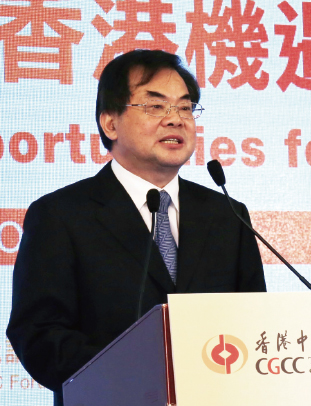
According to Fan Hengshan, NDRC Deputy Secretary General, the level of economic cooperation between the Mainland and Hong Kong has further elevated over the past year, following the signing of the framework agreement for the construction of the Bay Area and the Arrangement for Advancing Hong Kong’s Full Participation in and Contribution to the Belt and Road Initiative. He reckoned that this would enable the unique advantages of Hong Kong and Macau be put into full play, making it more convenient for Hong Kong and Macau residents to develop in the Mainland. The interconnection of the infrastructures in Guangdong, Hong Kong and Macau will also open up new room for growth for Hong Kong and Macau.
 He emphasized that China will continue to attach much importance to the steady and prosperous development of Hong Kong as it propels social development. The Mainland will support Hong Kong in participating in the “Belt and Road” initiative, accelerate the construction of the Bay Area, and actualize interconnection through mega infrastructures, so as to fortify Hong Kong’s position as an international finance, shipping and trade center.
He emphasized that China will continue to attach much importance to the steady and prosperous development of Hong Kong as it propels social development. The Mainland will support Hong Kong in participating in the “Belt and Road” initiative, accelerate the construction of the Bay Area, and actualize interconnection through mega infrastructures, so as to fortify Hong Kong’s position as an international finance, shipping and trade center.
Looking at the new year, he believes that the context is favorable to support economic growth and the economy could expect to maintain good momentum under steady circumstances; high volatility is unlikely to occur. He mentioned that, at present, the Chinese economy has stepped down from the high-speed growth phase and entered a phase of high quality development. Quality and effectiveness have become the priority considerations, and the structural reform of the supply side would be the main axis to foster reforms in the quality of economic development, efficiency, and impetus. The quality of supply will be continually enhanced, and consumption upgrades will be driven. These will form a virtuous cycle between supply and demand, offering a powerful source of domestic demand to propel economic development.
Fan said that China will continue to deepen the structural reform of the supply side, as well as integrate the use of marketization and measures of the rule of law to keep capacity utilization within a reasonable range. At the same time, strategies to revive villages and to coordinated regional development could promote the sound system of integrated urban and rural development and open up new room for economic growth. Yet, he also called our attention to the need of exerting our full power in guarding against and resolving major risks, alleviating poverty with precision, preventing pollution, optimizing the property protection regime, promoting reform in the investment and financing system, as well as deepening the reform in the scopes of electricity, natural gas, and rail freights, etc.
Christopher Hui: Synchronized Finance and Economy
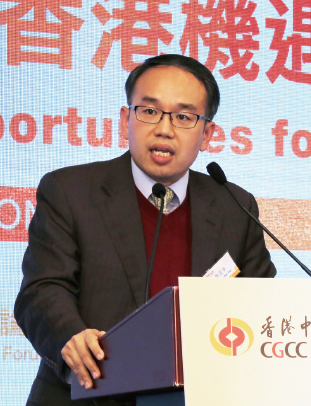
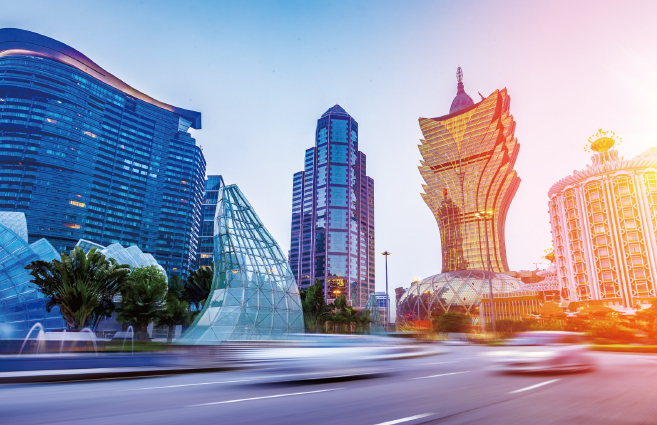 The financial advantages of Hong Kong are expected to play a key role in the construction of “Belt and Road” and the Guangdong-Hong Kong-Macao Bay Area. According to Christopher Hui, Managing Director and Head of Project Management for Market Development at Hong Kong Exchanges and Clearing Ltd, while countries along “Belt and Road” possess promising natural resources and sizeable populations, they are yet to develop in their economic levels, infrastructures, funding and technologies, growth in consumption, sustainability and environmental conservation. The Asian Development Bank estimated that the annual investment requirement for infrastructures in the Asia-Pacific region would reach USD1.7 trillion by 2030, and more than USD26 trillion would be needed in total. The tremendous growth potentials imply that Hong Kong can make itself useful through its financial and other professional services. It can offer all-round platforms in fund raising and risk management, serve as the biggest offshore RMB market, provide green financing, and promote public-private cooperation, etc. He added that in the Arrangement for Advancing Hong Kong’s Full Participation in and Contribution to the Belt and Road Initiative signed at the end of last year, certain parts are dedicated to the financial and investment industries. For example, qualified Chinese-funded institutions to construct relevant green projects for “Belt and Road” will be supported to issue bonds for fund raising through Hong Kong platforms, which would drive the establishment of internationally-recognized green bond certification bodies. The channels for bi-directional cross-border RMB fund flows between the Mainland and Hong Kong will be optimized to foster further interconnection between the capital markets of both sides. Connections and diversified financing channels to provide funding for “Belt and Road” construction will be provided, including services such as listing in the stock market for fund raising, syndicated loans, private equity and bond financing, etc.
The financial advantages of Hong Kong are expected to play a key role in the construction of “Belt and Road” and the Guangdong-Hong Kong-Macao Bay Area. According to Christopher Hui, Managing Director and Head of Project Management for Market Development at Hong Kong Exchanges and Clearing Ltd, while countries along “Belt and Road” possess promising natural resources and sizeable populations, they are yet to develop in their economic levels, infrastructures, funding and technologies, growth in consumption, sustainability and environmental conservation. The Asian Development Bank estimated that the annual investment requirement for infrastructures in the Asia-Pacific region would reach USD1.7 trillion by 2030, and more than USD26 trillion would be needed in total. The tremendous growth potentials imply that Hong Kong can make itself useful through its financial and other professional services. It can offer all-round platforms in fund raising and risk management, serve as the biggest offshore RMB market, provide green financing, and promote public-private cooperation, etc. He added that in the Arrangement for Advancing Hong Kong’s Full Participation in and Contribution to the Belt and Road Initiative signed at the end of last year, certain parts are dedicated to the financial and investment industries. For example, qualified Chinese-funded institutions to construct relevant green projects for “Belt and Road” will be supported to issue bonds for fund raising through Hong Kong platforms, which would drive the establishment of internationally-recognized green bond certification bodies. The channels for bi-directional cross-border RMB fund flows between the Mainland and Hong Kong will be optimized to foster further interconnection between the capital markets of both sides. Connections and diversified financing channels to provide funding for “Belt and Road” construction will be provided, including services such as listing in the stock market for fund raising, syndicated loans, private equity and bond financing, etc.
Meanwhile, the Guangdong-Hong Kong-Macao Bay Area is making good progress. Hui pointed out that the Guangdong-Hong Kong-Macao Bay Area has a solid economic foundation, smoothly operating logistics systems, as well as an active financial investment market, just like the three world-leading bay areas in San Francisco, New York and Tokyo. Amidst the opportunities of the Bay Area, Hong Kong can once again put its financial advantages to good use. For example, in terms of the stock market, it could be the preferred destination for overseas listing of mainland companies; it could also reform its listing system to attract new economy companies to go public in Hong Kong; the stock markets of Shanghai-Hong Kong Connect and Shenzhen-Hong Kong Connect can also be improved. In the scopes of fixed-interest products and currencies, it could offer channels to invest in the interbank bond market of the Mainland, a series of RMB-denominated options and options for hedging and investing, as well as become a listing platform for RMB-denominated bonds. As for commodities trading, it could be work in the physical delivery of gold futures in dual currency, and as a pricing center for financial transactions. He emphasized that new technologies and the new economy have already become the new wave for promoting global development. He expressed his hope that the financial ecosystem in the new economy of Hong Kong could become bigger and stronger to live up to and embrace the new needs of the industries and investors.




